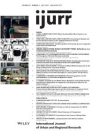The launch of economic neoliberalization in India in the 1990s unfolded a new urban habitat in Indian metropolitan cities with public spaces becoming an important part of a parvenu visual display. A vigorous state‐led bourgeois imaginary based on an aestheticized model of order and cleanliness ensued, but its realization is often ‘cracked and refracted’, illustrating the problematic conceptualization of public spaces in postcolonial India. This article examines the imagination of the Marina beach in Chennai, from its creation in the colonial era to the different cycles of re‐imagination pursued in the postcolonial years. In doing so, it highlights a fundamental difference between the Western and indigenous understandings of open spaces, which is characterized by conflict at two levels — first of all, between the public and the common, and secondly, between the public and the crowd. This persists to date, as a result of which state‐produced plans for the Marina have come across weakly and attempts to implement grand visions on the beach have frequently been thwarted. Reduced to a narrower set of fragmented pursuits, the state (and those who subscribe to its bourgeois imaginary), instead of looking for a reconciliation between the two conceptualizations of open spaces, increasingly employs class stereotypes to legitimize one (the public) and discredit the other (the common/crowd).
Details
Written by:
PUSHPA ARABINDOO
Digital Object Identifier (DOI)
10.1111/j.1468-2427.2010.00943.x
About DOI
Read full article as PDF
Read full article as HTML
See the references for this article
